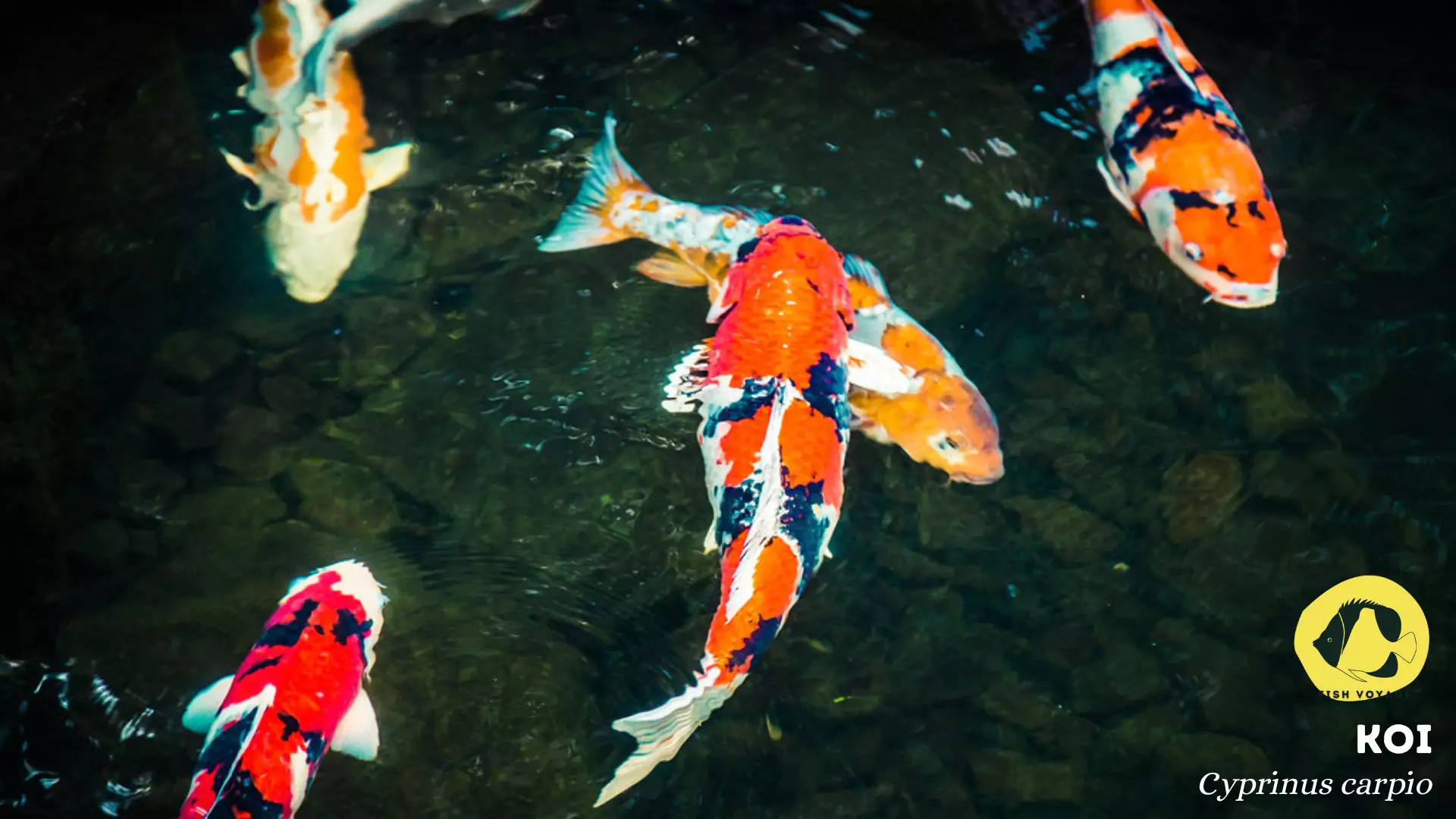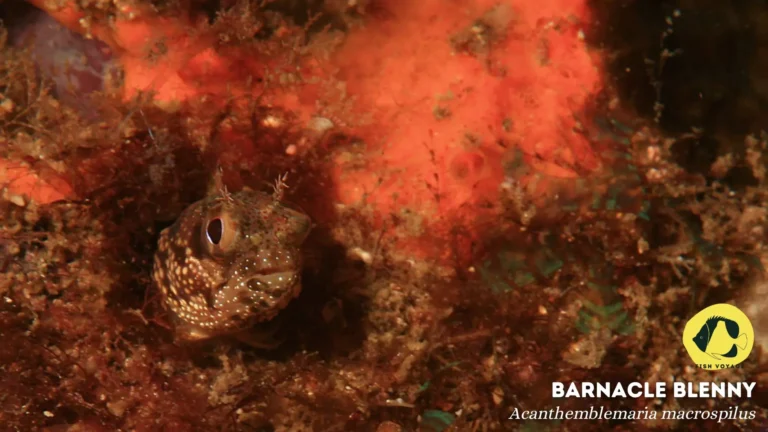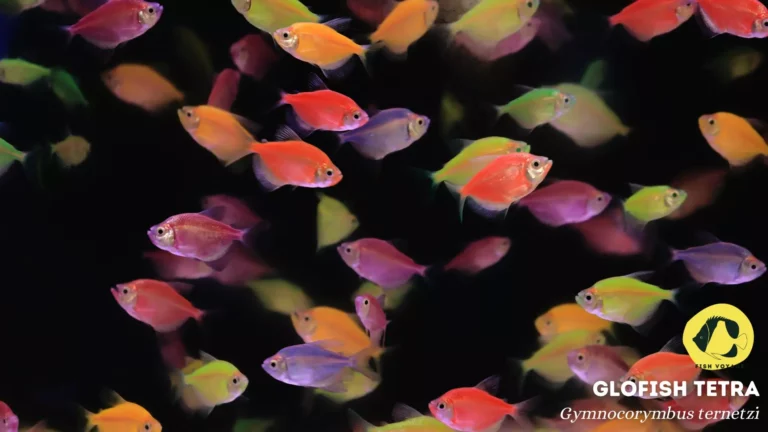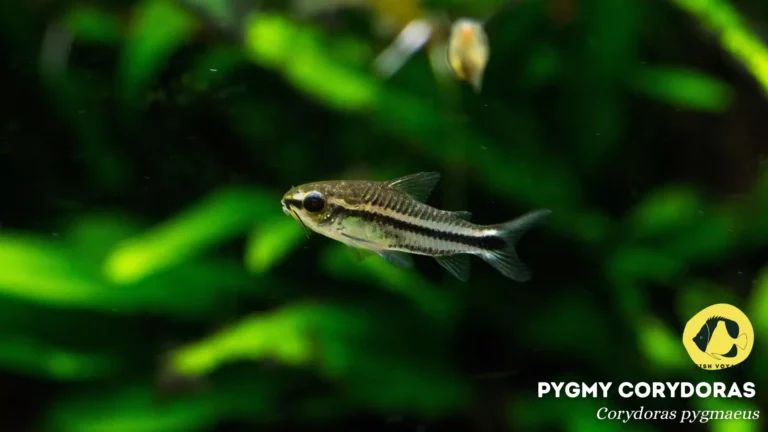What Can I Feed My Koi Besides Fish Food

Koi, with their vibrant colors and graceful swimming, are not just ornamental pond dwellers; they are cherished members of many aquatic environments. These elegant fish require a thoughtful approach to their nutrition, as a well-balanced diet is paramount to their overall health and vitality. Beyond the traditional fish food options, understanding the diverse dietary needs of koi is crucial for their well-being. In this article, we delve into the importance of providing a varied diet for koi, exploring alternative and supplemental feeding options that contribute to their optimal health. By recognizing and catering to their nutritional requirements, we can ensure these captivating creatures thrive in our aquatic landscapes.
Traditional Koi Fish Food: A Quick Review
Common Commercial Koi Fish Foods
Commercially available koi pellets dominate the market, providing a convenient and widely accessible option for koi enthusiasts. These pellets come in various formulations, each tailored to specific needs such as color enhancement, growth, or seasonal adjustments. Recognizing the importance of quality in these standard feeds is essential, as it directly influences the overall health and appearance of your koi.
Nutritional Benefits of Standard Koi Pellets
Standard koi pellets are meticulously formulated to meet the nutritional requirements of koi fish. Rich in essential nutrients such as proteins, fats, vitamins, and minerals, these pellets contribute to the development of vibrant colors, robust growth, and a resilient immune system in koi. The controlled and balanced nature of these pellets allows for precise feeding, reducing the risk of overconsumption and associated health issues. Opting for reputable brands ensures the highest quality ingredients, reinforcing the health benefits of this traditional koi food option.
Alternative Options for Feeding Koi
Homemade Koi Food Recipes
Brief Guide on Preparing Nutritious Homemade Koi Food
Crafting homemade koi food is a rewarding endeavor. Blend high-quality ingredients like fish, vegetables, and grains for a balanced and nutritious diet. Our step-by-step guide ensures your koi receive the optimal nutrients for vibrant health.
Emphasis on Using High-Quality Ingredients
Elevate your koi’s diet with premium ingredients. Emphasize the importance of sourcing high-quality components to ensure a well-rounded nutritional profile. This careful selection contributes to the overall health and longevity of your cherished koi.
Fresh Vegetables and Fruits
List of Koi-Friendly Vegetables and Fruits
Explore a diverse list of koi-friendly vegetables and fruits, including spinach, peas, watermelon, and oranges. Learn how these fresh produce options contribute essential vitamins, minerals, and antioxidants, enhancing the overall health and vibrancy of your koi.
Nutritional Benefits and Considerations
Delve into the nutritional benefits of incorporating fresh produce into your koi’s diet. From supporting digestive health to promoting vibrant coloration, understanding the specific advantages of each vegetable and fruit empowers you to create a well-balanced and enjoyable menu for your koi.
Live Foods
Introduction to Live Foods
Discover the world of live foods such as earthworms, daphnia, and brine shrimp. Uncover the benefits of these options, including enhanced protein intake and the stimulation of natural feeding behaviors. Integrate live foods to elevate your koi’s health and vitality.
Benefits of Live Foods for Koi Health
Explore how live foods contribute to the overall well-being of your koi. From boosting immune function to promoting growth and coloration, live foods play a crucial role in mimicking natural feeding habits. Learn how to incorporate these options effectively into your koi’s diet.
Supplementary Foods
Discussion on Supplementing the Diet
Delight your koi with supplementary treats like shrimp or mealworms. However, caution is key. Engage in a thoughtful discussion on the importance of moderation and frequency. Strike the right balance to ensure treats remain a delightful addition without compromising your koi’s health.
Caution on Moderation and Frequency
Understand the potential pitfalls of overindulgence. Our discussion emphasizes the importance of moderation and provides guidelines on the frequency of offering supplementary foods. Strike the perfect balance between treats and a well-rounded diet for a thriving and contented koi.
Seasonal Feeding Considerations
Adjusting Koi Diets Based on Seasons
As the seasons change, so do the dietary needs of your koi. During the warmer months, koi are more active, necessitating a higher protein intake to support growth and energy requirements. In contrast, as temperatures drop in cooler seasons, a switch to a lower protein and easily digestible diet becomes imperative. Adapting the feeding regimen to align with seasonal changes ensures that your koi receive the nutrition tailored to their metabolic demands.
Insight into How Koi Metabolism Changes
Understanding the metabolic shifts in koi during different temperatures is crucial for their overall well-being. Warmer water temperatures increase metabolic rates, requiring a diet rich in proteins for energy. In colder temperatures, koi metabolism slows, necessitating a diet that is easier to digest to prevent digestive issues. This nuanced approach to feeding aligns with the natural rhythms of your koi’s physiology, optimizing their health throughout the changing seasons.
Consideration for Seasonal Behaviors
Beyond temperature alone, seasonal behaviors of koi should also influence feeding practices. During the breeding season, for instance, an increase in protein can support the energy demands of reproduction. Being attuned to these natural cycles allows for a more holistic approach to feeding, promoting the health and vitality of your koi in every season.
Balancing Act in Transitional Periods
Transitional periods between seasons require special attention. Gradual adjustments to the feeding regimen help koi acclimate to changing temperatures and prevent stress. Monitoring your koi’s behavior and adjusting their diet accordingly ensures a smooth transition, reducing the likelihood of health issues associated with abrupt dietary changes.
Quality Seasonal Feeding Plans
Crafting a quality seasonal feeding plan involves collaboration with reputable experts or utilizing trusted resources. Seeking advice on specific seasonal diets and adjusting accordingly ensures that your koi receive the optimal nutrition to thrive in every phase of the year. A well-informed and adaptable approach to feeding enhances the resilience and longevity of your cherished koi.
Feeding Schedule and Quantity Guidelines
Establishing a Consistent Feeding Schedule for Koi
Crafting a reliable feeding schedule is a cornerstone of responsible koi care. Consistency in feeding times not only establishes a routine that your koi can anticipate but also helps maintain optimal water quality by preventing over-accumulation of uneaten food. Whether it’s a daily ritual or a carefully planned weekly schedule, adherence to a consistent routine contributes to the overall health and well-being of your koi.
Guidelines on Portion Control to Prevent Overfeeding
Portion control is paramount in preventing overfeeding, a common issue that can lead to various health problems and compromised water quality. Providing an amount of food that your koi can consume within a few minutes ensures they receive the necessary nutrients without excess that can contribute to obesity and related complications. Careful observation of your koi’s eating habits allows for adjustments to portion sizes, promoting a balanced and healthy diet.
Tailoring Feeding to Koi Life Stages
Recognizing the dynamic needs of koi at different life stages is crucial in establishing feeding schedules. Younger koi, in their growth phase, may require more frequent feedings, while older, mature koi benefit from a slightly reduced schedule. Tailoring the feeding routine to accommodate these life stage variations supports optimal growth and health throughout the different developmental phases of your koi.
Monitoring Environmental Factors
Environmental factors such as water temperature and weather conditions can influence the metabolic rate of koi. Adjusting the feeding schedule based on these external variables ensures that your koi receive the appropriate amount of nutrition corresponding to their metabolic needs. This adaptability promotes a responsive and attentive approach to koi care, optimizing their well-being in diverse conditions.
Educating and Involving Caretakers
Establishing a feeding schedule is not only about the fish but also about educating and involving caretakers. Providing clear guidelines on the importance of consistency and portion control fosters a collaborative effort in maintaining the health of the koi. Regular communication and shared responsibility contribute to a harmonious and well-maintained aquatic environment.
Utilizing Technology for Precision
Embracing advancements in technology, such as automatic feeders and monitoring devices, can enhance the precision of feeding schedules. Automated systems ensure timely and accurate dispensing of food, even in the absence of caretakers. This technological integration adds an element of convenience to the feeding routine while maintaining the health and vitality of your koi.
Adhering to these feeding schedule and quantity guidelines not only promotes the physical health of your koi but also establishes a nurturing routine that strengthens the bond between caretaker and fish.
Common Mistakes to Avoid
Overfeeding
- Common Pitfall: Overenthusiastic feeding can lead to overconsumption, resulting in digestive issues, compromised water quality, and potential health problems for your koi.
- Maintaining Balance: Implement portion control, observe feeding behaviors, and resist the urge to overindulge your koi. A balanced diet is key to their well-being.
Inconsistent Feeding Schedule
- Common Pitfall: Irregular feeding disrupts the metabolic rhythm of koi, impacting their growth, vitality, and overall health.
- Maintaining Balance: Establish and adhere to a consistent feeding schedule. Routine fosters predictability, reducing stress and promoting a healthy environment for your koi.
Poor Quality or Stale Food
- Common Pitfall: Neglecting the quality of koi food can lead to nutritional deficiencies. Stale or low-quality food may lack essential nutrients vital for koi health.
- Maintaining Balance: Invest in reputable, fresh, and nutritionally balanced koi food. Regularly check expiration dates and store food properly to ensure its quality.
Neglecting Seasonal Adjustments
- Common Pitfall: Ignoring seasonal changes in feeding requirements can result in overfeeding during warmer months and inadequate nutrition in colder seasons.
- Maintaining Balance: Adjust feeding schedules and food composition according to seasonal variations. Recognizing these shifts ensures a diet aligned with your koi’s changing metabolic needs.
Ignoring Individual Dietary Needs
- Common Pitfall: Assuming all koi have identical dietary needs neglects the unique requirements of individual fish, potentially compromising their health.
- Maintaining Balance: Observe and assess each koi’s condition, adjusting their diet based on factors like age, size, and health status. Tailoring feeding plans enhances the overall well-being of your fish.
Overlooking Environmental Factors
- Common Pitfall: Disregarding environmental conditions, such as water temperature, can affect koi metabolism and influence their feeding requirements.
- Maintaining Balance: Consider external factors when establishing feeding routines. Adapting to changes in temperature and weather ensures a harmonious balance between your koi and their environment.
Failure to Monitor Health Indicators
- Common Pitfall: Neglecting to monitor koi for signs of overfeeding, stress, or health issues can result in delayed intervention and potential complications.
- Maintaining Balance: Regularly observe your koi for changes in behavior, appearance, or appetite. Timely identification and response to health indicators contribute to a proactive and preventive care approach.
Lack of Variety in the Diet
- Common Pitfall: Providing a monotonous diet can lead to nutritional imbalances. Koi benefit from a diverse range of foods for optimal health.
- Maintaining Balance: Introduce variety through live foods, fresh produce, and high-quality commercial feeds. A well-rounded diet contributes to enhanced coloration, growth, and immune function.
Avoiding these common mistakes and implementing strategies for maintaining a healthy balance in the diet ensures the longevity, vibrancy, and well-being of your cherished koi.
Conclusion
In conclusion, the realm of koi feeding is rich with possibilities, offering enthusiasts a palette of alternative options to enhance the well-being of these cherished aquatic companions.
Recap of Alternative Koi Feeding Options
Let’s reflect on the diversity explored – from nutritious homemade koi food recipes and the vibrancy of fresh vegetables and fruits to the stimulation of live foods like earthworms and brine shrimp. Supplementary treats, when offered with caution, add a touch of delight to your koi’s dining experience. Each alternative contributes to a holistic and varied diet, fostering the health and vitality of your koi.
Encouragement for Koi Enthusiasts to Experiment
As you embark on this journey of discovery, we encourage you to experiment with different feeding options. Tailor your koi’s diet to their unique preferences and observe the positive impact on their colors, growth, and overall happiness. Embrace the joy of learning and the satisfaction of providing a diet as diverse and vibrant as your koi themselves.
Additional Resources
Explore a wealth of knowledge beyond these pages with our curated list of external resources, ensuring you’re equipped for a fulfilling journey in koi care.
Reputable Books for Further Reading
Dive into the expertise of renowned authors with titles like “Koi: A Complete Guide by Bernice Brewster and Nick Fletcher” and “Koi Health and Disease by Dr. Erik Johnson.” These comprehensive books provide in-depth insights into koi nutrition, health, and overall well-being.
Forums and Communities for Shared Experiences
Join the vibrant discussions on Koi-Bito Forum and Garden Pond Forums, where experiences are shared, challenges are troubleshooted, and connections with fellow enthusiasts are forged. These platforms offer invaluable spaces to exchange insights and build a supportive network within the dynamic koi community.
Navigate the vast sea of koi care with these carefully selected external resources, guiding you towards a comprehensive and fulfilling journey in the art of keeping and feeding these captivating aquatic companions.
Frequently Asked Questions (FAQs)
1. What Seasonal Adjustments Should I Make in My Koi’s Feeding Routine?
Adjust your koi’s feeding schedule and diet based on seasonal variations. Warmer months may require higher protein intake, while colder seasons benefit from a switch to easily digestible options. Recognizing and adapting to these changes ensures optimal nutrition and overall koi health.
2. Can I prepare homemade koi food, and what ingredients should I use?
Yes, you can prepare homemade koi food using a blend of high-quality ingredients such as fish, vegetables, and grains. Emphasize a balanced mix to ensure your koi receive essential nutrients for their overall health and well-being.
3. What vegetables and fruits are safe for koi, and how do they benefit their health?
Koi can enjoy a variety of vegetables and fruits, including spinach, peas, watermelon, and oranges. These foods provide essential vitamins, minerals, and antioxidants, supporting overall health, vibrant coloration, and digestive well-being in koi.
4. How often should I include live foods in my koi’s diet, and what are the benefits?
Introduce live foods like earthworms, daphnia, and brine shrimp periodically to simulate natural feeding behaviors. These live foods offer high-quality proteins and contribute to vibrant colors, robust growth, and overall health in koi.
5. Are there precautions to consider when supplementing my koi’s diet with treats?
While treats like shrimp or mealworms can be delightful, moderation is crucial to prevent overfeeding and maintain a balanced diet. Exercise caution in the frequency and quantity of supplementary foods to avoid potential health issues in your koi.






